Many pet parents find it difficult of carrying their pups every time and keeping them in the car. Sometimes, pups try to climb the higher surface on their own, which is not safe for them as it increases the chances of getting injured.

We are here to help you, in this blog we have covered the importance of having a dog ramp, how to train a dog to use a ramp, benefits, and other more related terms.
Keep reading to know more!
Contents
Why Do Dogs Need a Ramp?
It’s important to keep a dog ramp at home and train your pooch to use it. It will not only help him to reach the higher surface easily, but also prevent him from getting injured.[1]
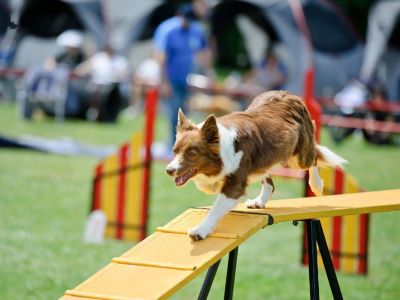
As stated on PetMD, “Ramps not only make it easier for the pet to access the car or the back door; they also protect them from injury that could occur when/if the dog attempts to jump up into a vehicle or climb stairs and they fall backward.”
No matter, whether you are parenting a puppy, adult healthy dog, or senior dog. You can use ramps and train them well. So, next time when they want to jump to a higher surface, they simply use a ramp for it.
Steps to Train Your Dog to Use a Ramp
As you know, it’s important to keep a dog ramp at home. Now, let’s look at the steps of how to train a dog to use a ramp. Before starting the training, it’s important to keep a leash and treats handy, and place a ramp in an open area.
Step One: Going Up
Sprinkle your pup’s favorite treat on the ramp surface, and with those treats make a path to the ramp. Your pup will get attracted to those treats and will come forward toward the ramp. Keep encouraging him and let him climb the ramp. Once he is on the ramp, feed him more treats in the form of appreciation for trying out new things.
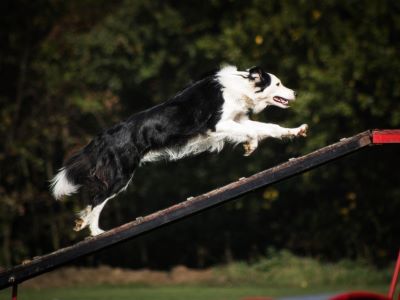
Step Two: Coming Down
Follow the same procedure to bring him down. Sprinkle his favorite treat on the floor, which will help him to get down the ramp. Make sure he is able to balance himself and doesn’t fall down.

Step Three: Offer Treats
The reason behind offering treats while training him to use a ramp is that it’s an easy way to get his attention, and he will remember the training tips. For instance, he thinks he will get treats and appreciation for following the steps carefully and doing it right.
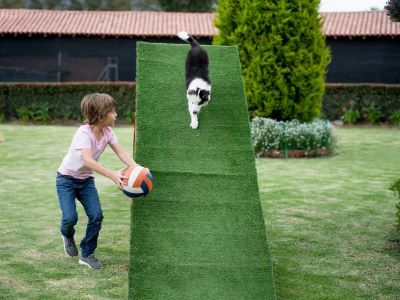
Step Four: Add Incline
Once your pup is not scared of climbing the ramp and is able to manage his balance. Now, you can add blocks and bricks on the ramp to make it a bit inclined. This will help him to learn, how to climb the steeper path, and can easily climb higher surfaces.
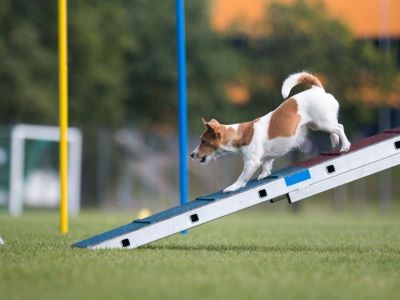
Step Five: Get to the Vehicle/Couch
The final step, take the ramp to the outside and put it in the loading position on one end of the car. Now, all you need to do is encourage your dog to climb the ramp and get in the car. For his safety, stand beside the ramp, so he doesn’t fall down. Repeat this process until he walks and comes down without the help of treats.

Benefits of Using a Dog Ramp
We can’t overlook the fact, that a dog ramp is useful for all types of dog breeds. Even for injured or senior dogs, the ramp makes it easy for them to access the higher surface without giving strain on their joints.
As per greymuzzle “Ramps can be adjusted for height depending on the object they are resting on, which makes it easy for them to be used at a more gradual incline when first training.“
Here, we have jotted down a few benefits of why you should use a dog ramp for your pooch.
Easy for Dogs to Climb
A dog ramp will make your pup’s life easy. It will help him to jump high and easily climb into high vehicles, couches/stairs, etc. In addition, it will make it easier for you because you won’t have to lift your pup to keep him in the car.
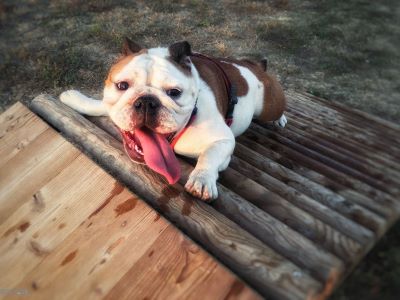
Prevent Injury
If there is a slippery surface, dogs can hurt themselves by climbing high into the vehicle without any support. A ramp with a good grip and non-slippery surface can reduce the chance of falling down, and prevent your pup from getting injured.
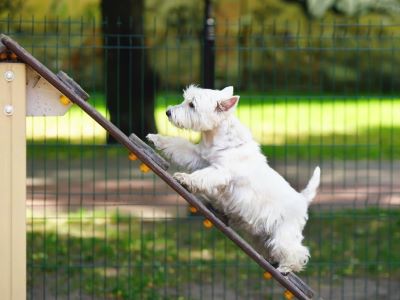
Less Stress on Joints
A ramp is essential for all types of dogs. Especially, important for those with joint issues. This is because it makes it easy for them to climb on the high surface without suffering from any pain.
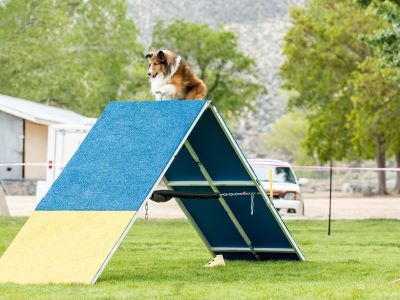
Good to Use for Small Dog Breed
Well, small dog breeds might face issues in climbing up on high surfaces like a high vehicle, couches, stairs, etc. So, for small-height dogs, a ramp is a good option as it helps them to easily access high surfaces.

Note:- Senior dogs are prone to joint issues. It is important to train them again, so they can get used to the ramp. Which helps to reduce the strain on the joints, and easily get into the car or any other higher surface.
FAQs
Is a dog ramp worth it?
Yes, dog ramps are worth buying. It not only trains your pooch to climb up easily on the vehicle, couch, stairs, etc. But also prevent them from getting injured while they jump high on the vehicle or stairs.
What makes a good dog ramp?
Well, it’s important to find a ramp, that is comfortable for your pup. Make sure it has a good walking and non-slippery surface. Plus, the ramp should be strong enough to hold your pup’s body weight.
Why won’t my dog use a ramp?
If your dog is hesitating to climb up on the ramp, it might be because he is not confident enough, to stand still on the ramp. You can offer treats, and motivate him to get over his phobia of falling down.
Well, It’s a Wrap!
- It’s important to keep a dog ramp at home and train your pooch to use it.
- Offering him a treat is an easy way to get his attention, and he will remember the training tips.
- You can also add blocks and bricks on the ramp to make it a bit inclined.
- The final step is to encourage your dog to climb the ramp and get in the car.
References:
- Corlett, E. N., Hutcheson, C., DeLugan, M. A., & Rogozenski, J. (1972). Ramps or stairs: The choice using physiological and biomechanic criteria. Applied ergonomics, 3(4), 195-201.
- Using a mobility assistance dog reduces upper limb effort during manual wheelchair ramp ascent in an individual with spinal cord injury. (n.d.). Retrieved December 19, 2022, from https://doi.org/10.1179/2045772313Y.0000000110

When it comes to dogs, Julia ignores nothing. Being an animal behaviorist, dog trainer and a dog parent she knows exactly how even a tiny change in a dog’s surroundings and diet can leave dogs disturbed for a longer duration. Hence, she always makes sure to review for us only the best products for dogs out there.

